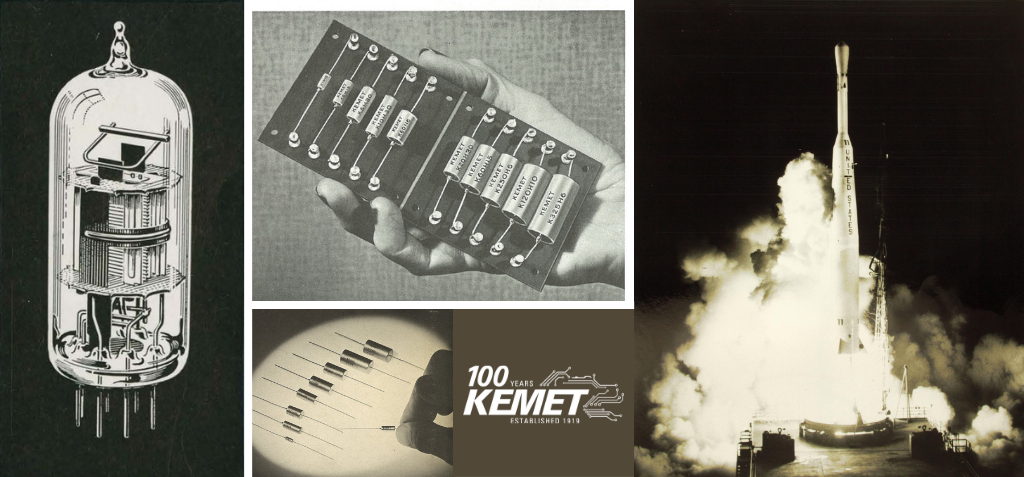The post-war era of the late 1940s and early 1950s ushered in a time of technological advances that would vastly change everyday life. Electric powered appliances were becoming more readily available and affordable, transforming households around the world. Families gathered in the evening to watch black and white TV shows, news and sports, thus creating a shared national dialogue. Additionally, the possibility of space travel was no longer science fiction.
In this increasingly modernized society, the large and relatively fragile vacuum tube began to take a back seat to the newest technology, the transistor. Bell Labs is credited with the invention of the transistor in 1947. It was clear that the transistor would quickly replace the vacuum tube as the main power source in industrial and consumer electronics, as it was smaller and offered increased durability and reliability. The capacitor worked hand-in-hand with the transistor, an ideal complement to the technology. While KEMET didn’t abandon its signature getters, the business would shrewdly expand with the market change.
By 1954, transistor radios were commercially available on store shelves, and portable entertainment soared in popularity. As the demand for transistors rose, so did the demand for capacitors. To capitalize on this burgeoning business opportunity, Sprague Electric Company patented the perfect, commercial tantalum capacitor. KEMET’s leadership also set its sights on this opportunity in earnest.
Guided by Vice President of Operations Paul V. Malloy, KEMET began manufacturing a line of capacitors, introduced to the market in 1958. The late 1950s and early 1960s represented a boom time for KEMET’s capacitor business. Just one year after introducing KEMET capacitors to the market in 1958, the company built a pilot plant for the manufacture of solid tantalum capacitors for specialized application in industrial controls, aircraft, missiles, and satellites. Sales jumped 89 percent between 1960 and 1961. In 1962, KEMET capacitors were used to power Telstar, the world’s first active communications satellite, leading to astronomical business growth. In 1963, KEMET’s operations in South Carolina began in a 45,000 square foot facility. Only two years later, the plant had more than tripled in size. This expansion foretold the massive success to come.
The time span from the mid-1940s to the early 1960s saw a myriad of life-changing technological advances. From war rooms equipped with communication devices run by vacuum tubes, to the launch of the first active communications satellite in the world, KEMET was there. Importantly, KEMET’s leadership was able to capitalize on the exciting advances in technology to grow the company by embracing cutting edge innovations and applications. This ability to look forward is central to KEMET’s identity. Even today, as then, we continue to advance material science and technology through our electronic components.
